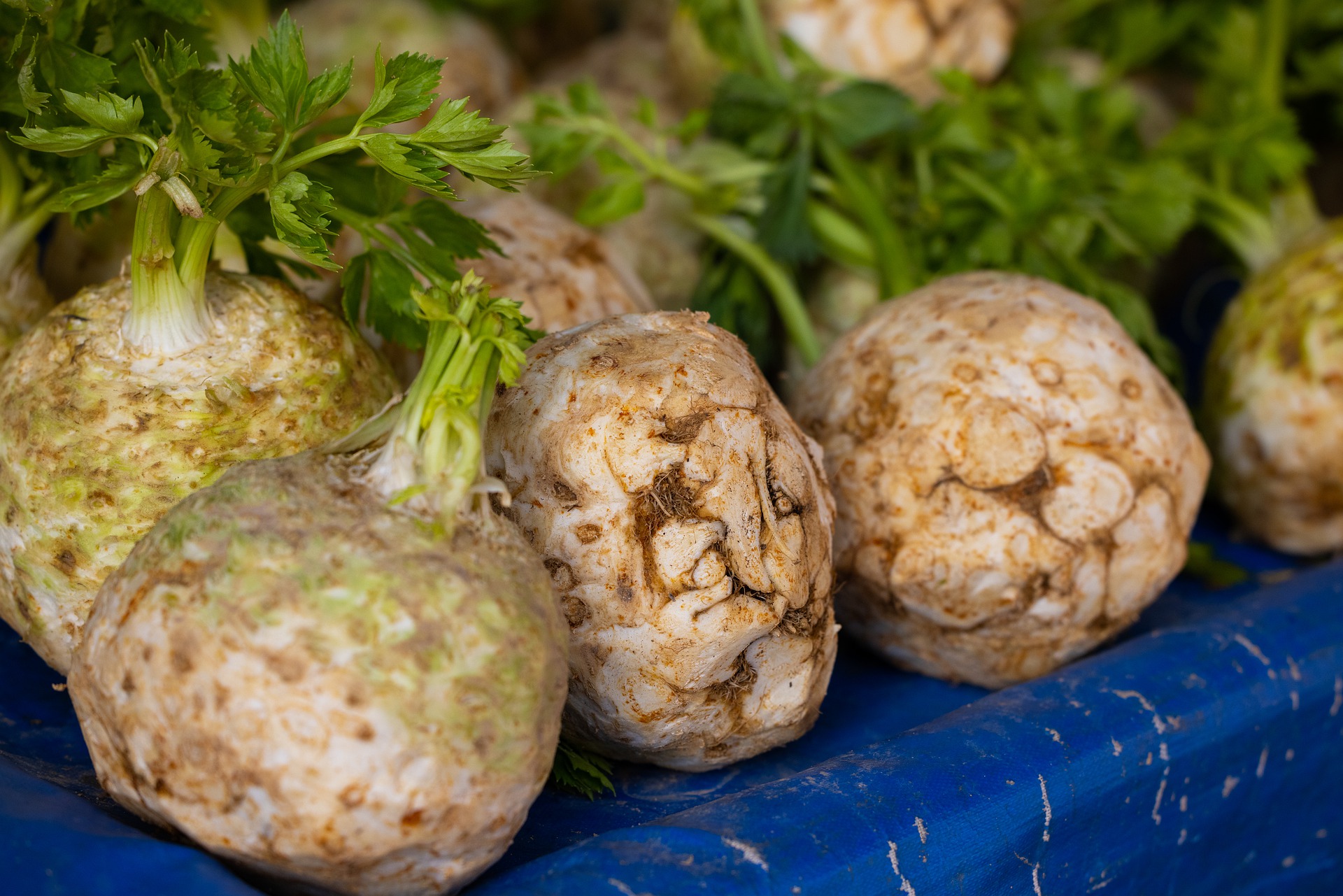Celery originates from the Mediterranean region and is represented today by wild celery (Apium graveolens var. graveolens). From this region, it spread throughout Europe, where it began to be used as a vegetable in the 17th century. In ancient Egypt, celery was used as an ornamental and medicinal plant, while the ancient Greeks used it during funeral ceremonies.
Current Varieties of Celery
Today, there are three main varieties of celery (Apium graveolens L.) cultivated worldwide:
- Leaf Celery (Apium graveolens var. secalinum L.) – Only the leaves are used.
- Stalk Celery (Apium graveolens var. dulce L.) – Both the leaf stalks and leaves are used.
- Root Celery (Apium graveolens var. rapaceum L.) – The swollen root and leaves are used.
Root Celery is a biennial plant whose swollen root and leaves are consumed. Leaf celery and stalk celery (also known as white celery) do not have swollen roots. The leaves are larger than those of parsley, smooth, shiny, and deeply lobed. In the second year, the plant produces a flowering stem (70 – 100 cm tall), which branches out.
In our region, root celery is the most widely grown variety. The most well-known cultivar is ‘Praški orijaš,’ an old Czech cultivar. Newer cultivars, primarily bred for their swollen roots, have medium-sized foliage and large round or oval swollen roots. The skin is smooth, with hairy roots only on the lower part, making it easier to harvest and clean. The internal tissue is uniform and white, does not form internal cavities, and retains its white color after cooking.
Nutritional Value of Celery
Celery is used as a seasoning in cooking and is valued for its medicinal properties, such as its diuretic effects. In the kitchen, it is used as an addition to cooked dishes or raw in salads. The leaves can be preserved by drying or freezing, while the root can be preserved by pickling.
The nutritional content varies between the leaves (and leaf stalks) and the root. Celery is not particularly high in vitamins, with vitamin C being the most prevalent at 7 – 62 mg/100g in fresh stalks and 7 – 11 mg/100g in fresh roots. The energy value of 100g of celery (root with leaves) is low, at 14 kcal / 59 kJ.
Nutritional Value of Fresh Celery
| Nutrients | Amount in % | Amount in % |
|---|---|---|
| Root | Stalks | |
| Raw proteins | 0.7 – 2.0 | 0.9 – 1.3 |
| Raw fats | 0.2 – 0.5 | 0.1 – 0.3 |
| Carbohydrates | 5 – 12 | 3.5 – 6.5 |
| Fiber | up to 2.2 | up to 1.3 |
| Minerals | 1 – 1.4 | 0.7 – 1.2 |
| Water | 84 – 90 | 92 – 94 |
Minerals in Fresh Celery
| Minerals | Amount in mg/100g fresh root | Amount in mg/100g fresh stalks |
|---|---|---|
| Potassium | 276 – 350 | 287 – 400 |
| Magnesium | 9 – 12 | 2 – 35 |
| Calcium | 35 – 88 | 50 – 140 |
| Iron | 0.1 – 1 | 0.5 – 1.3 |
| Phosphorus | 28 – 115 | 40 – 65 |
This detailed information provides an overview of celery’s varieties, origins, and nutritional value, highlighting its uses both in the kitchen and for its health benefits.













































